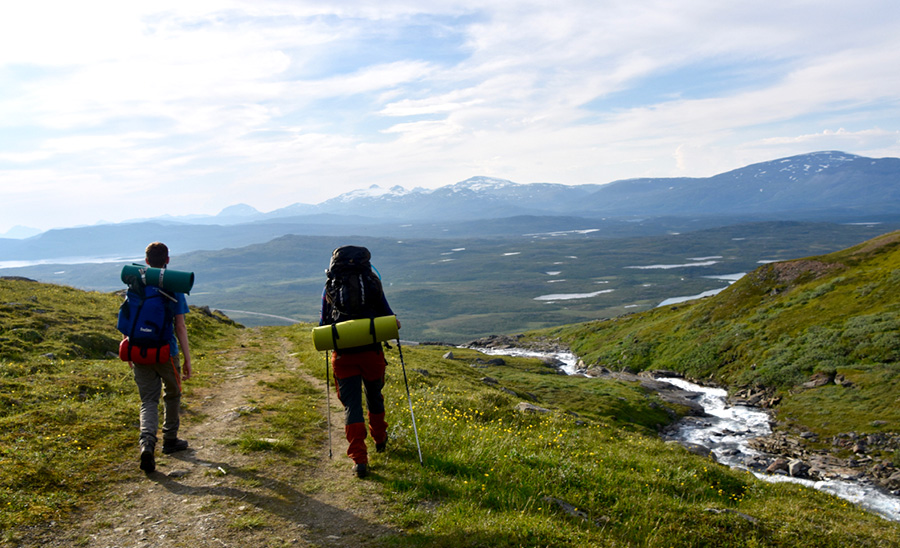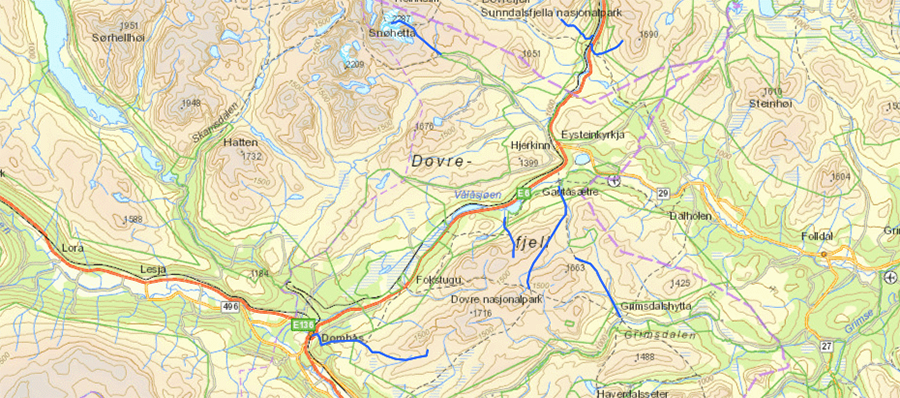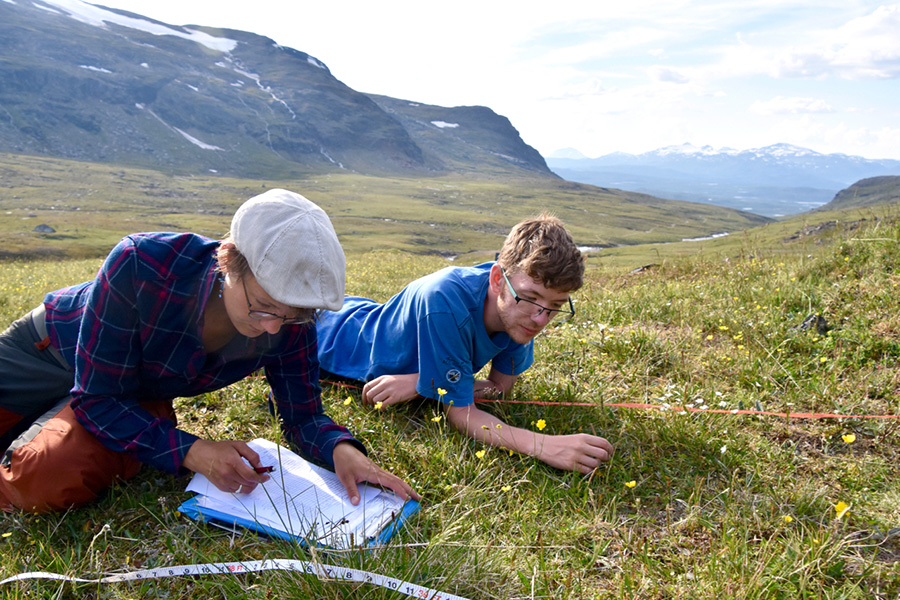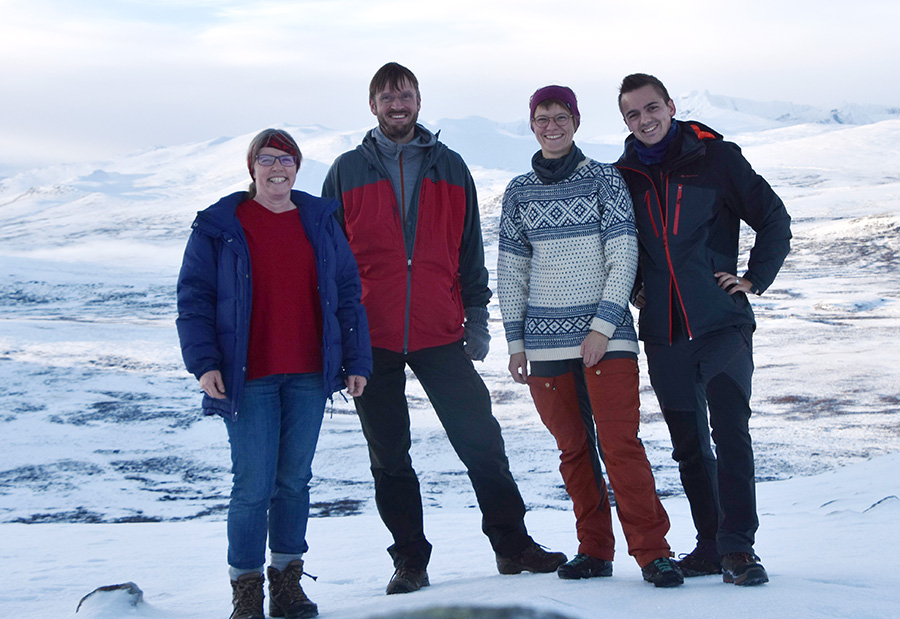MIREN trails Scandinavia - Multiscale Biology
MIREN trails Scandinavia
In the MIREN trails Scandinavia project we examine how hiking trails influence the surrounding vegetation. We want to find out if lowland plants move up into seemingly too harsh alpine environments along trails, and if trails create opportunities for alpine plants to establish in areas that are typically dominated by more competitive lowland plants.
Friluftsliv is an integral part of Scandinavian life. Networks of trails link cabins and mountain tops to roads and settlements, canalizing the movements of hikers and other recreational users. Currently, we lack understanding of the combined effects of land use changes, such as tourism, and climate change on mountain ecosystems. We need more knowledge on the plant colonization processes, biotic interactions, and changes in community composition. In this project we examine the effects of disturbance and climatic stress on different life history stages of plants for improved understanding of plant colonization and persistence in alpine vegetation. This will allow better predictions on the effects of hiking trails on plant communities and inform management decisions concerning hiking trails in vulnerable alpine landscapes.

MIREN trails Scandinavia is part of a global effort to understand vegetation dynamics along trails. Fieldwork is carried out in the Dovrefjell region, Norway, and in the Abisko region, Sweden. The project spans from 2018 – 2022 and fieldwork is conducted until 2021. Funding comes from NTNU and from DKNVS Stiftelses forskningsfond.

The project combines observational and experimental approaches. Along selected hiking trails that span large altitudinal gradients, we examine the vegetation in different distances from the trail. We record all plant species, signs of herbivores like reindeer and muskox, trampling damage, and other variables. We also install small temperature loggers, that measure the local microclimate and mark the plots with sticks for further research. In some of the plots we install seed traps (seen as plastic doormats). They will be collected in the fall of 2019 and will help us to determine how hiking trails influence seed transport.

As part of a global effort we are also logging the location of selected plant species along all the trails we hike. These plants are lowland plants from Europe that are invasive in other regions of the world. Using our survey, we aim to understand more about hiking trails as pathways for plant invasion. First results can be found on the MIREN webpage.
We have also applied to set-up a large-scale experiment, that will allow us better insight into the mechanisms that drive vegetation shifts by disturbances for hiking trails. This experiment would include the creation of artificial gaps and sowing of species with different temperature preferences in these gaps. We plan to reconstruct the disturbed areas after the end of the experiment in 2021.
Team

The MIREN trails Scandinavia research in Norway is conducted by Ronja Wedegärtner and supervised by Bente Jessen Graae, René van der Wal and Jonas Lembrechts. Master students Aidan Macdougald, Ilias Jannsens and honor’s student Mackinlay Mazerole conduct their thesis research within the project. Fieldwork in Sweden was conducted by Ronja Wedegärtner and Jonas Lembrechts.
Contact
If you have further questions about the project, please do not hesitate to contact Ronja Wedegärtner.
